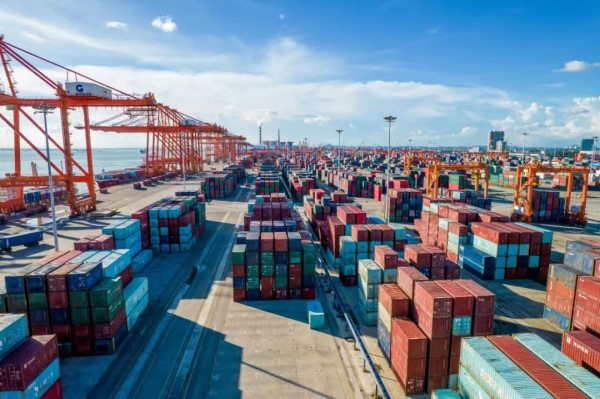Guangxi FTZ attracts ASEAN cross-border e-commerce companies

As an important hub for China to carry out cross-border e-commerce import and export business transactions with ASEAN, China (Guangxi) Pilot Free Trade Zone (FTZ) has attracted more than 100 cross-border e-commerce enterprises from ASEAN customs.
According to Customs' statistics, China's cross-border e-commerce import and export volume reached 1.92 trillion yuan ($284.74 billion) last year, an increase of 18.6 percent.
According to data released by the General Administration of Customs on July 13, the total import and export volume between China and ASEAN in the first half of this year was 2.95 trillion yuan, a year-on-year increase of 10.6 percent.
In the first half of this year, China's cross-border e-commerce exports to ASEAN increased by 98.5 percent. After the RCEP took effect at the beginning of the year, the development momentum of cross-border e-commerce between China and ASEAN countries has been further strengthened.
The Guangxi FTZ has attracted cross-border e-commerce companies like Lazada and Shopee. Southeast Asian companies are speeding up the construction and operation of overseas warehouses. Among them, Lazbao has built an overseas warehouse spanning 7,000 square meters in Thailand and plans to expand it to 50,000 square meters this year.
At present, the Guangxi FTZ has formed a cross-border e-commerce logistics backbone for multi-line access to ASEAN, as well as opened 10 cross-border e-commerce air routes to Bangkok, Thailand, Kuala Lumpur, Malaysia, and Singapore to accelerate the construction of fast freight channels for ASEAN. In addition, the maritime network connecting ASEAN and the cross-border road and railway logistics routes are continuously increasing, while cross-border e-commerce logistics cover the Indochina Peninsula.

Guangxi FTZ. [Photo/WeChat account: gh_df8bc987e060]
MOST POPULAR
- 1 $39.7 billion worth of deals inked at Airshow China
- 2 China announces tax relief measures to stabilize real estate sector
- 3 A look at China's economy in October, 2024
- 4 Public holiday extension announced
- 5 China's NEV annual production hits 10 million milestone amid global carbon reduction efforts
Editors' Picks
 Infographic:
Golden jubilee of China-Brazil relations
Infographic:
Golden jubilee of China-Brazil relations
 Infographic:
A look at China's economy in October 2024
Infographic:
A look at China's economy in October 2024





